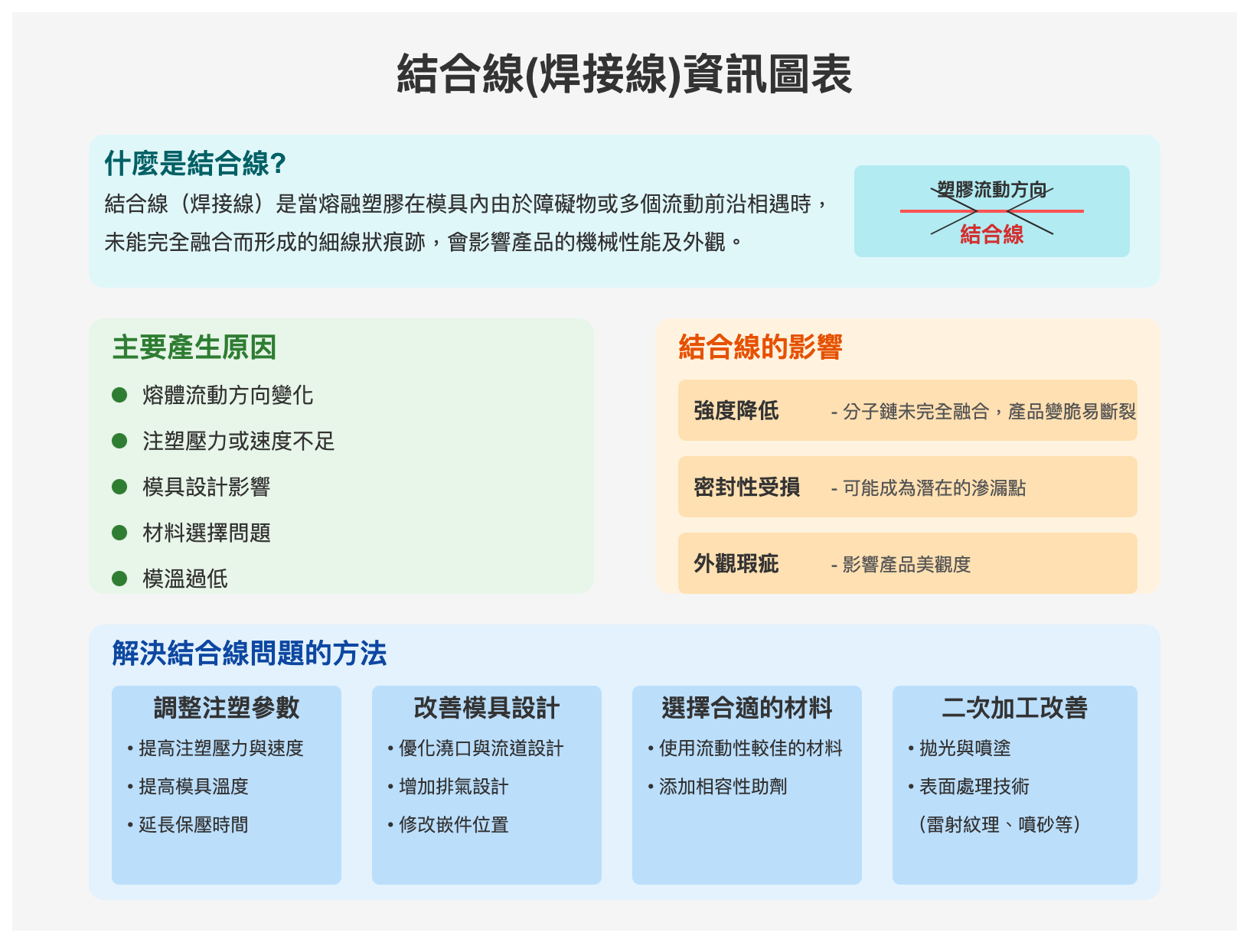Causes of poor plastic injection molding: How to solve the weld line problem?

During plastic injection molding,Weld LineIt is one of the common undesirable phenomena, especially in applications where high requirements are placed on product appearance and structural strength, such as cosmetic containers, electronic product housings, mechanical parts, etc. If the joint line is not handled properly, it may lead to reduced product strength, appearance defects, and even affect functional performance. This article will deeply analyze the causes of weld lines and provide effective solutions to help companies improve the quality of plastic products.
What is a join line? Why does it happen?
The weld line, also known as the weld line or weld mark, is a thin line-like mark formed when the molten plastic fails to completely fuse inside the mold due to obstacles (such as inserts) or when multiple flow fronts meet. Such marks will affect the mechanical properties and appearance of the product, especially transparent or high-gloss products.
Main causes
- Change in melt flow direction – When the plastic melt encounters an obstacle in the mold or multiple flow fronts converge, a weld line is easily formed.
- Insufficient injection pressure or speed – If the injection pressure or speed is too low, the melt will cool too quickly and the melts will not be able to fully merge.
- Influence of mold design – Poor gate position and runner design may lead to uneven melt flow and cause weld lines to appear in key parts of the product.
- Material selection issues – The fluidity of plastic materials and additives (such as glass fibers) may affect the fusion ability of the melt.
- Mold temperature is too low – Low mold temperature will cause the plastic melt to cool quickly, reducing fluidity and thus affecting the fusion effect of the weld line.
Effect of the weld line
- Reduced strength – The molecular chains in the bond line area fail to fully fuse, making the product brittle and easy to break.
- Damaged seal – For products that need to be air-tight or water-tight, such as electronic housings, bond lines can become potential leak points.
- Appearance defects – On high gloss, clear or pigmented products, the weld line may become noticeable and detract from the product’s aesthetics.
Solutions to the Weld Line Problem
1. Adjust injection molding parameters
- Increase injection pressure and speed: Appropriately increase pressure and speed so that the melt can fill the mold faster and more evenly, reducing the cooling effect.
- Increase mold temperature: Appropriately increase the mold temperature to make the melt have better fluidity and fusion in the bonding line area.
- Extend the holding time: Ensure that the melt is fully integrated in the mold to avoid cooling too quickly to form an obvious bonding line.
2. Improve mold design
- Optimize gate and runner design: Change the gate position to change the melt flow direction and move the bonding line to a non-critical position.
- Increase exhaust design:Ensure smooth melt flow and avoid gas retention affecting fusion effect.
- Modify the insert position: If the weld line appears near the insert, consider reconfiguring the insert position or changing the processing method.
3. Choose the right material
- Use materials with better fluidity: Choose plastics with lower viscosity or better fluidity to improve melt fusion ability.
- Add compatibility additives:Certain additives can improve the fusion effect between melts and reduce the impact of the weld line.
4. Use secondary processing to improve appearance
- Polishing and spraying: The visibility of the weld line can be reduced through polishing, painting or special spraying techniques.
- Surface treatment technology: Use laser texturing, sandblasting and other methods to blend the joining line with the product surface texture to reduce visual impact.

in conclusion
Weld lines are one of the inevitable challenges in plastic injection molding, but with properInjection molding parameter adjustment, mold optimization, material selection and secondary processing, which can effectively reduce its impact and improve product quality.
Qili's mold development technology can provide the best solutions for different product requirements, ensuring that your products have both appearance and structural strength. If you have any plastic injection related needs, please contact usconnect, let us help you solve your molding problems!







